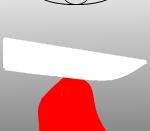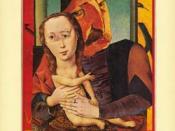Task: In the text The Handmaid's Tale, Atwood explores the limitations imposed by gender, power and religion. Discuss.
In Margaret Atwood's A Handmaid's Tale, Atwood explores the limitations of society imposed by gender, power and religion. In the book, the male species is the dominant gender. The have a lot less restrictions, and many more freedoms. In one way they have the ultimate power, but in another, the females are in control. Power is divided into classes, or positions. Commanders and their wives seem to hold physical power, but handmaids hold the mental power. Although they can't think the way they want to, they can slightly alter someone else's wants and needs. Religion is the main source of limitations in the book. Their whole life is based around the bible, but only some bits, not all. They are forced to believe in Gilead's beliefs, and if they don't, they will suffer serious consequences.
These three things limit the people enormously. They must think the way that is expected, act like they're supposed to, and even speak the way they are expected to speak.
Firstly, Atwood explores the limitations caused by gender. It is quite clear to see that the male gender dominates in the aspect of power and control. However, they seem to be more vulnerable than the women. A flash of a woman's eyes can melt a thousand hearts. Men have the freedom to go out, socialise, and have sex. They aren't expected to be fully covered, and they can do basically whatever they feel like. The handmaids however, are expected to dress in full length dresses, exposing no skin, avoid eye contact and verbal contact, forbidden to have any relationships with anyone (including friendships), and are considered as only "breeding tools". If they are unsuccessful at that,



The Handmaid's Tale
Yours is a wonderful essay on Margaret Atwood's classic story. You've done a great job of exploring the limitations imposed by gender, power and religion in "The Handmaids Tale." Superb effort!
10 out of 10 people found this comment useful.